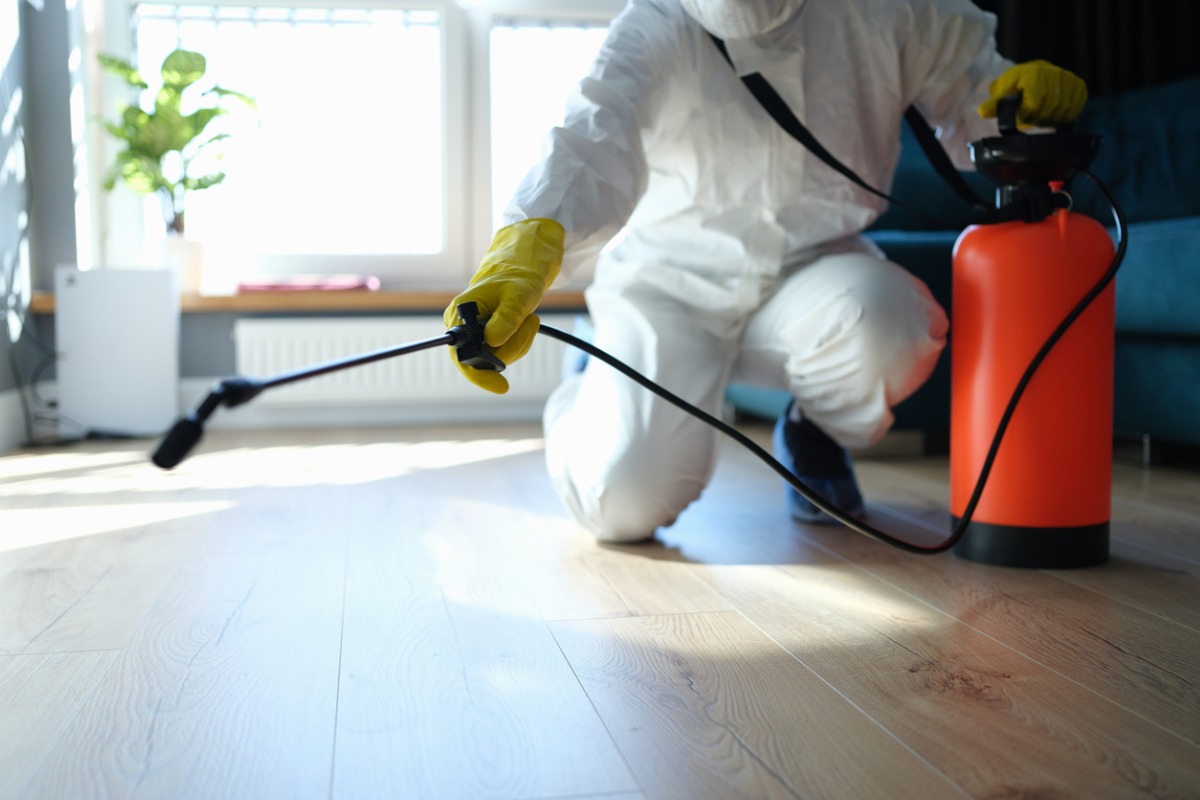Quick and professional Pest Control to ease your worries.
Eco-Friendly Parasite Control Approaches for Taking Care Of Wildlife in Urban Locations
Urban areas usually discover themselves at the intersection of human task and wildlife, leading to special challenges in parasite administration. These approaches not only safeguard the atmosphere yet also improve area interaction in wild animals administration. As metropolitan populaces proceed to grow, comprehending the characteristics of wildlife interactions becomes significantly important.
Understanding Urban Wild Animals Dynamics
Recognizing Urban Wild animals Characteristics is necessary for creating efficient and environment-friendly pest control methods. Urban locations are increasingly becoming habitats for numerous wild animals species, driven by variables such as habitat fragmentation, food schedule, and human advancement. Identifying these characteristics permits a nuanced approach to pest monitoring that lines up with eco-friendly concepts.
Urban wild animals commonly consists of species such as raccoons, squirrels, and birds, which adapt to city environments, discovering particular niches in eco-friendly areas, parks, and even houses. Their visibility can lead to conflicts with human beings, especially when they manipulate human resources for food and sanctuary. Understanding the behaviors and eco-friendly roles of these varieties educates methods that decrease negative communications while advertising biodiversity.
Furthermore, acknowledging the interdependencies within urban environments helps in determining important locations for habitat conservation and reconstruction. This expertise adds to the advancement of incorporated bug monitoring (IPM) strategies that consider the eco-friendly equilibrium, therefore decreasing dependence on unsafe chemicals. By fostering conjunction between human beings and city wildlife, cities can produce healthier settings that benefit both homeowners and local ecosystems, leading the way for lasting urban living.
Natural Repellents and Deterrents
Natural repellents and deterrents provide a sustainable choice to traditional pest control approaches by using the power of nature to keep unwanted species away. These green remedies generally utilize plant-based ingredients, necessary oils, and various other normally taking place materials that discourage bugs without damaging the environment.
One efficient all-natural repellent is peppermint oil, which is known to push back rodents and pests. Its strong aroma is undesirable to lots of pests, making it a preferred option for city settings. In a similar way, vinegar and citrus peels can act as deterrents, as their solid odors are usually unattractive to various wildlife.
Furthermore, diatomaceous planet is a natural powder that can be spread in locations prone to bug task, effectively dehydrating and deterring bugs without positioning risks to non-target types. Moreover, garlic sprays and neem oil are identified for their ability to repel a large range of bugs, consisting of both insects and larger wild animals.
Executing these all-natural repellents not only lowers dependence on chemical pesticides however likewise advertises Continue a healthier metropolitan community, cultivating an extra balanced coexistence between people and wild animals. By using these techniques, urban locations can effectively handle insect populations while lessening ecological influence.
Environment Modification Strategies
Reliable habitat modification methods play a critical duty in lasting parasite management by altering the environment to make it much less for pest invasions. By understanding the environmental characteristics of urban areas, residential property owners can implement tactical modifications that hinder parasites while advertising biodiversity.
(Ant control Port Charlotte)One key method includes maintaining correct cleanliness. This consists of routine waste elimination, safeguarding garbage can, and eliminating standing water to lower breeding websites for insects and rats. In addition, landscaping methods such as selecting indigenous plants can improve environmental equilibrium, supplying environments for beneficial microorganisms while decreasing resources for bugs.
One more crucial approach is to secure entrance factors in structures. Checking and repairing fractures in structures, walls, and windows can dramatically minimize insect access. Additionally, developing physical obstacles, such as fences or plant barriers, can prevent wild animals movement into human-inhabited areas.
Integrated Bug Monitoring Practices
Building upon environment alteration strategies, incorporated bug administration (IPM) techniques use an alternative strategy to controlling insect populaces while lessening ecological influence. IPM integrates numerous strategies, consisting of biological, social, mechanical, and chemical controls, to attain reliable parasite monitoring.
Organic control involves the introduction of all-natural killers or parasites to reduce insect populaces. Social practices, such as plant rotation and sanitation, disrupt pest life process and decrease their habitats - Pest control service. Mechanical controls, like catches and obstacles, provide immediate remedy for parasite pressures without chemical intervention
Chemical controls are made use of as a last hope, concentrating on targeted applications that restrict harm to non-target varieties and the environment. The option of eco-friendly pesticides, when needed, is integral to the IPM structure. In addition, keeping track of parasite populaces and assessing prospective damages assists educate decision-making, guaranteeing that treatments are timely and effective.
Community Involvement and Education And Learning

(Bed Bug Exterminator)Workshops and informational sessions can furnish residents with knowledge concerning native varieties, habitat conservation, and efficient safe bug management methods. Cooperation with institutions, regional organizations, and federal government firms better boosts instructional outreach, making sure that important information reaches varied target markets.
In addition, community-led initiatives, such as neighborhood clean-up days and habitat reconstruction jobs, not just promote biodiversity however additionally enhance area ties. Pest control service. By encouraging homeowners to share their experiences and observations, areas can create targeted approaches that deal with details neighborhood insect concerns
Including comments from citizens right into pest management prepares enables a much more receptive and flexible strategy to wildlife obstacles. Eventually, notified and involved communities are key to accomplishing long-lasting success in environmentally friendly bug control, causing much healthier metropolitan environments that value both human and ecological needs.

Verdict
In conclusion, green insect control comes close to deal sustainable remedies for handling metropolitan wild animals. By prioritizing environment adjustment, making use of all-natural repellents, and carrying out incorporated insect administration practices, neighborhoods can cultivate a harmonious conjunction with local fauna.